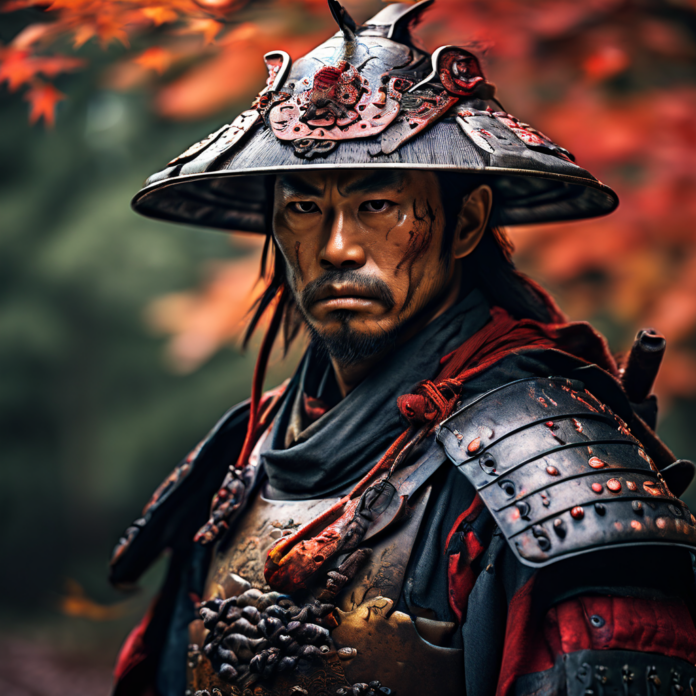The figure of the samurai has been and is very important for Japan as well as famous all over the world. We tried to grasp its essence with those who, even today, walk that path.
By Andrea Minervini Translation from Japanese by Sabrina Pitarresi
Between legend and stereotype
The figure of the Japanese samurai has always aroused fascination and curiosity for the “outside world”. Books, movies, video games, comics, television series; the samurai have landed practically everywhere with their iconic armor, swords and honorable ferocity, especially with the post-war period and the reconstruction of Japan, identity even before material. The same katana, the sword that the samurai used to use in battle, has become a symbol of strength and elegance, a weapon capable of instilling fear and respect even just for its own cultural background and that cloaks those who use it with that spiritual and combative strength that we have come to know … from images from pop culture, often stereotyped if not reductive. The point on which to focus attention is therefore this; the way of the samurai in Japan is not only a path that leads to confrontation and supreme sacrifice in the face of defeat. The samurai way boasts many other cultural facets that are often left out in favor of the most blatant aspects of these warriors and that perhaps Japan itself, during the Second World War, had radicalized to incorporate them into its war propaganda. Today more than ever the image of the samurai is making a comeback, inspiring many people and arousing admiration but it is perhaps precisely in these moments that it is good to try to provide a broader and less “inflated” picture of this culture so as to preserve its essence entirely. This is why, in an attempt to deepen this figure who has now become part of the glue between Japanese culture and the rest of the world, we talked to those who have decided to take this path to the full, making it their art and their life. We spoke with Tetsuro Shimaguchi, master of samurai art, graduated from Nihon University College of Arts. He was the choreographer of the fight scenes of Quentin Tarantino’s film “KILL BILL Vol. 1” and creator of the Samurai method “Kengido”. Founder of the General Incorporated Association “Samurai Code” and the KAMUI company.
The interview
Among the many images that are associated with Japan, that of the Samurai is perhaps one of the most common and widespread, but what did the figure of the samurai symbolize for Japan and Japanese peoples before the events of the Battle of Shiroyama?
I think that is a symbol of responsibility, determination and pride in living life [correctly].
Samurai and Shogun, two famous but often overlapping figures, what are the differences?
Firstly, the samurai and the shogun have different positions and roles. Samurai are senior warriors whose job is to protect the noblest warriors. The shogun is the general and the representative of the army or warlord that brings these samurai together.
We have mentioned the violent end of the samurai era, but why was that the “path” chosen? What role did political influences outside Japan play in the samurai’s demise?
Japan’s opening to the outside world after a period of isolation led to the evolution of civilization within the country. It is an irony of fate, as the external intention was to expand into Asia and secure a military base, but the end of the samurai era meant that Japan became more modern and also more prosperous. However, traditional classical culture and art began to decline.
In your opinion, how has the cult of the sword and samurai found its place in modern Japan (but also outside of it)?
Improving oneself and living one’s life with purpose. Samurai spirituality has much to learn and use even today and has naturally become a guideline to share and live better for future generations. It seems to me that the number of people abroad who respect Samurai culture and spirituality has increased in recent years.
All nations try as much as possible to preserve the traditional traits that make them unique. This, however, seems to be particularly felt for Japan, why? Is Japan at risk (or has it risked) losing its original identity?
It is true that Japan has a strong trend in this regard. There is a high level of pride in preserving the traditions of its long history. I think the fact that Japan is an island nation has been an important factor as when it came to foreign countries. After all, we risked losing much of our identity after World War II. In fact, I think many traditional things were lost.
You have collaborated with the world of Western cinema, what do you think of the often-stereotyped image of the samurai outside Japan?
Probably many people perceive samurai as warriors, but I don’t think so. Of course, when it was time to fight, the samurai were brave warriors and risked their lives.
However, they were also cultured and lived each day to dust themselves off with responsibility, determination and pride.
Besides ruling the world, they left behind many traditions and cultures, as well as arts and philosophies that are still relevant today.
I would be happy if more people could learn about these aspects and spirituality.
What does it mean to you be a samurai today?
First of all, I consider myself a samurai as an artist skilled in communication. Martial arts are called martial arts and performing arts are called performing arts. I think samurai were artists who represented life. Feeling that way, I started to work independently in the world as a [samurai artist]. It’s not about cutting people up and killing them, it’s about connecting them and bequeathing their thoughts and philosophy to the next generation. I believe the modern samurai is here to fulfil this role.

